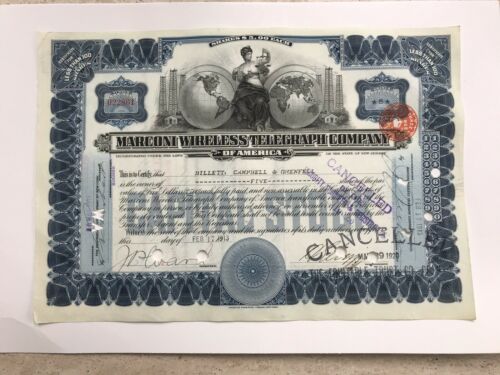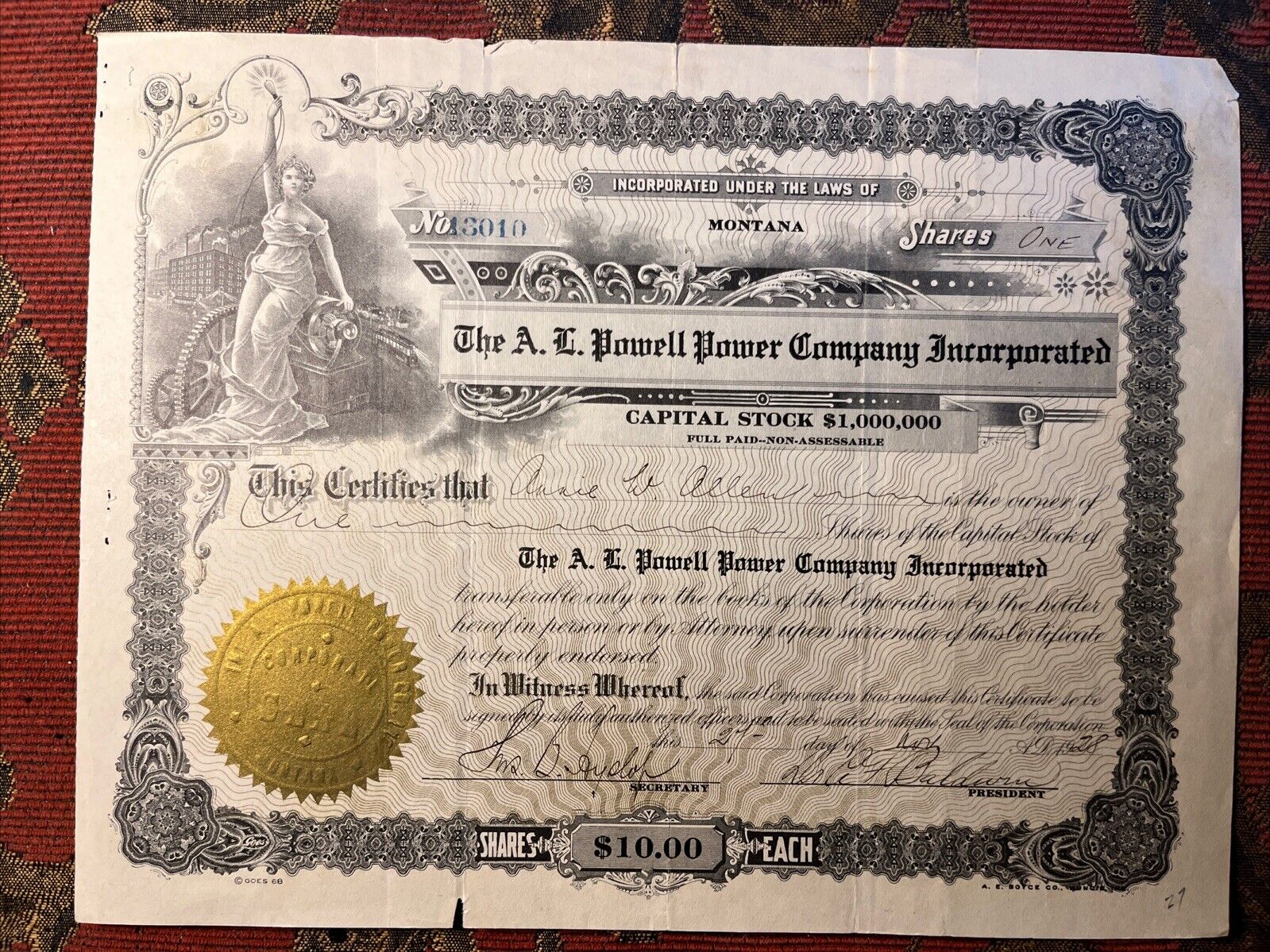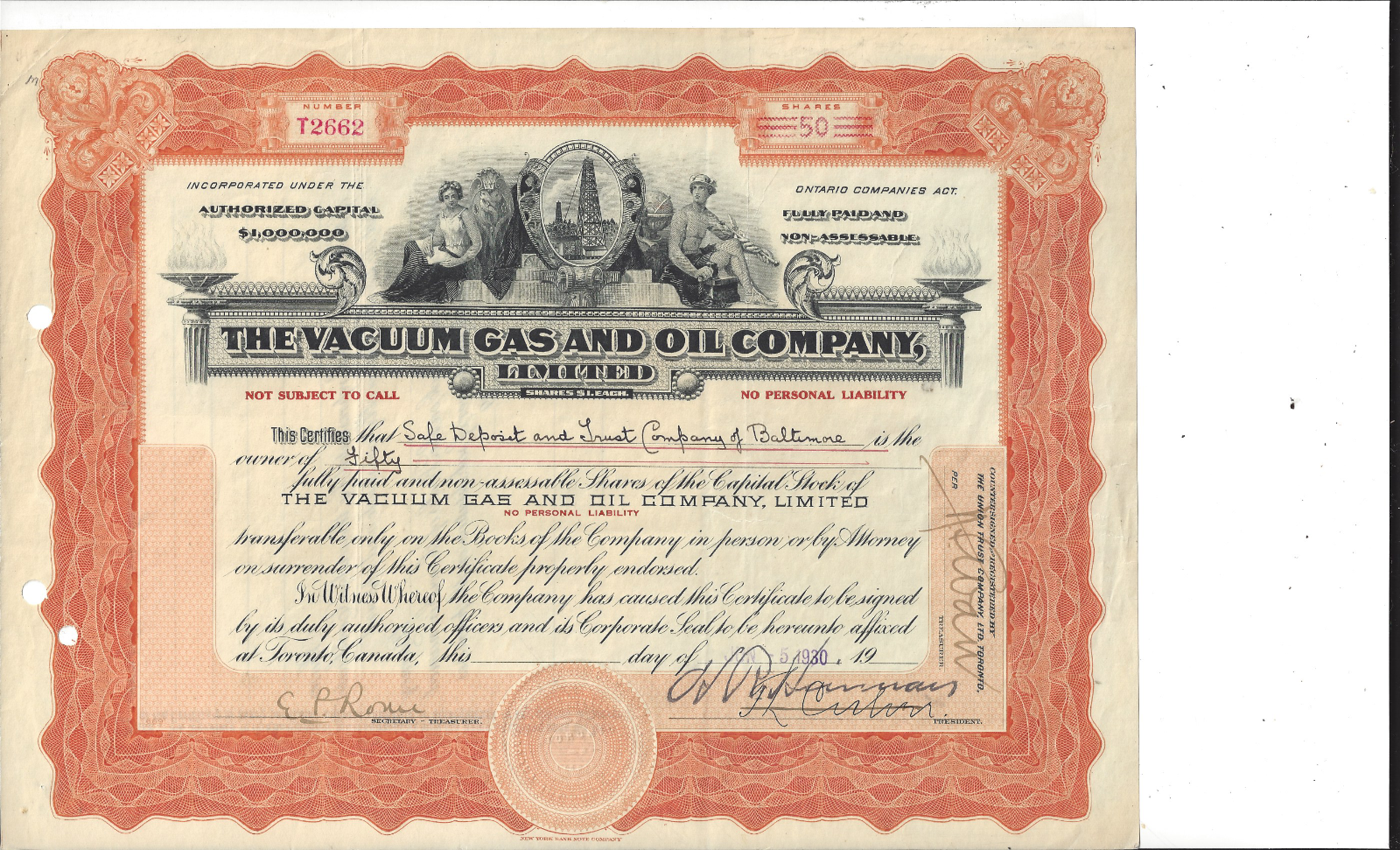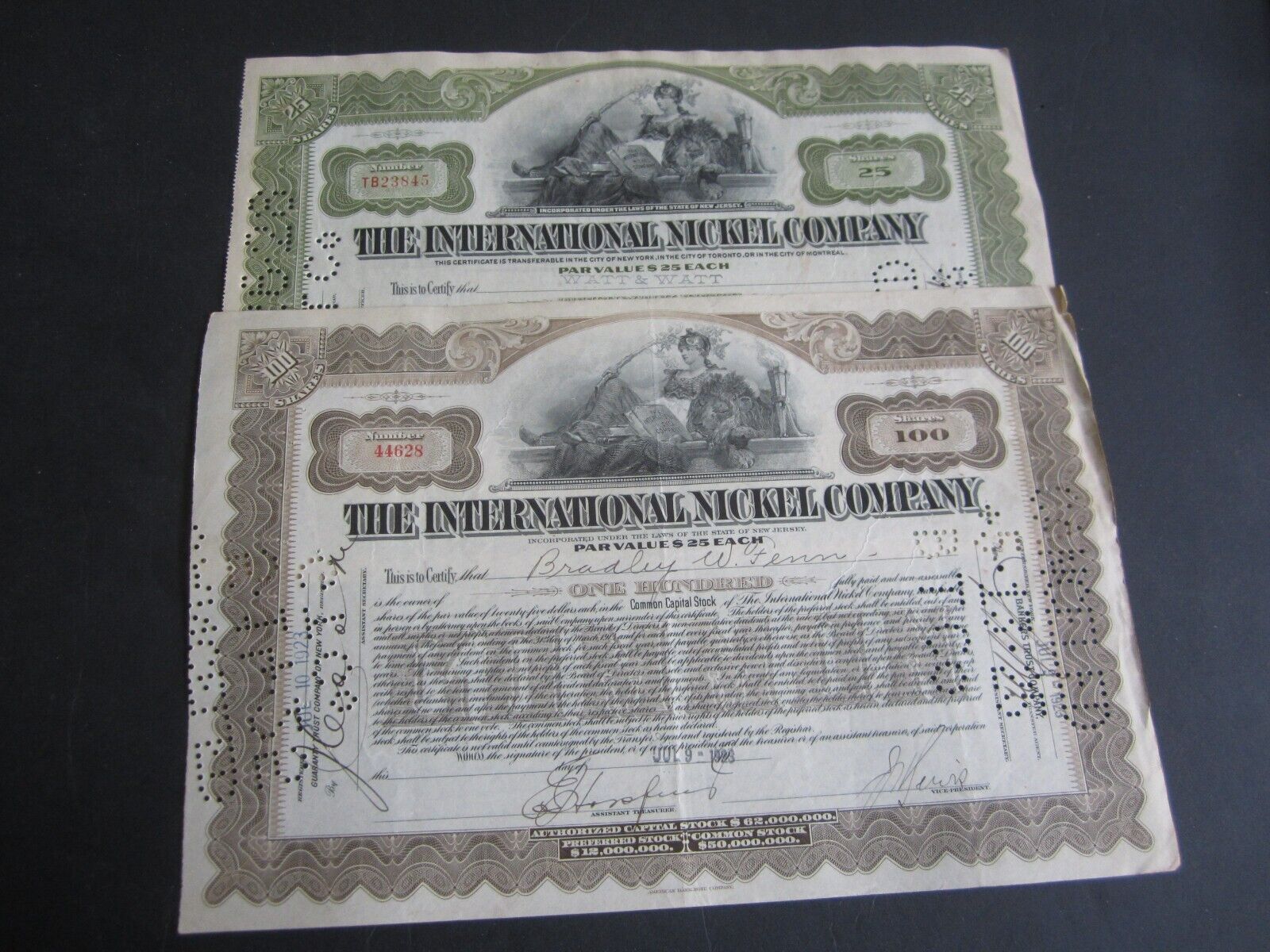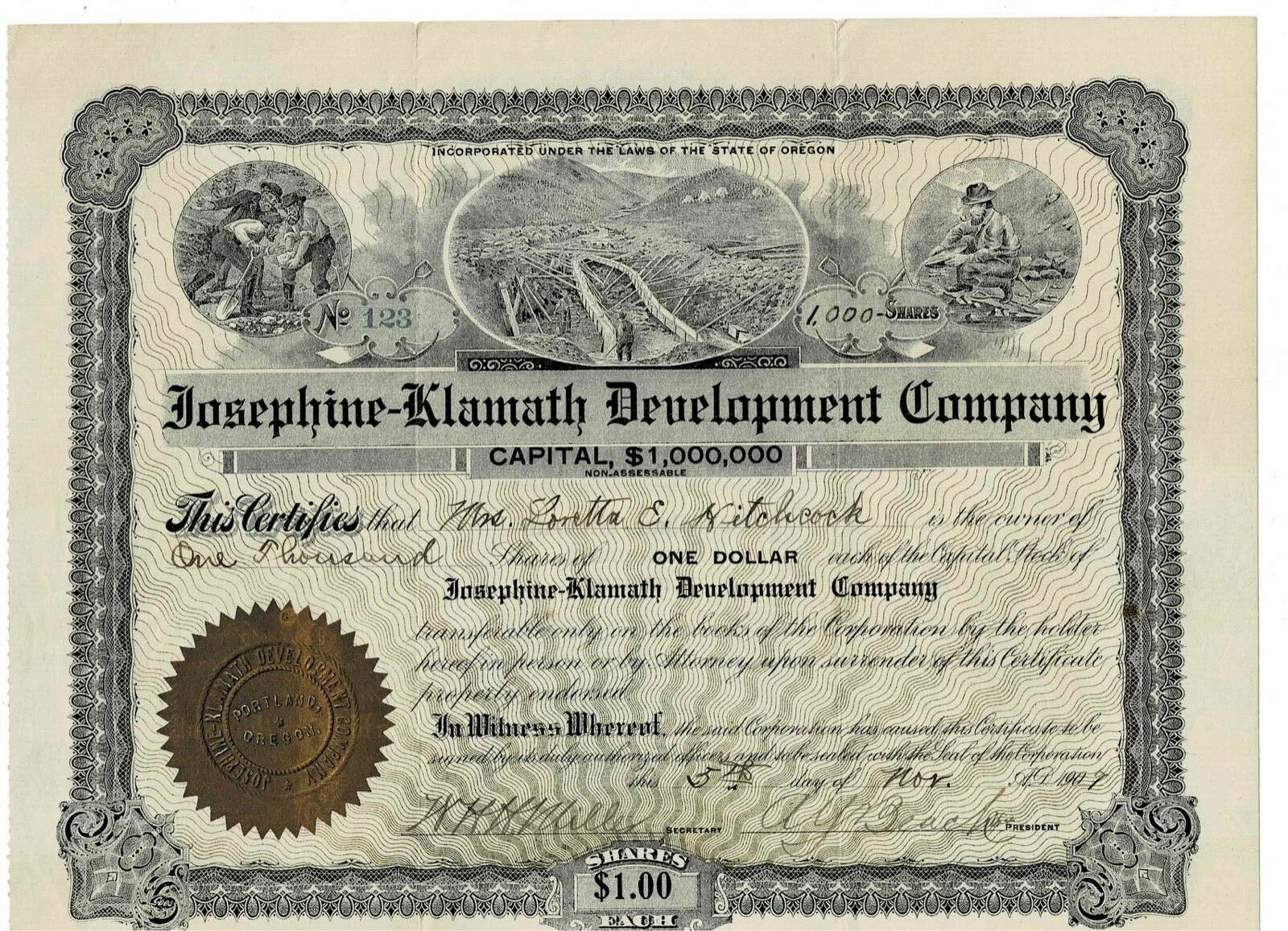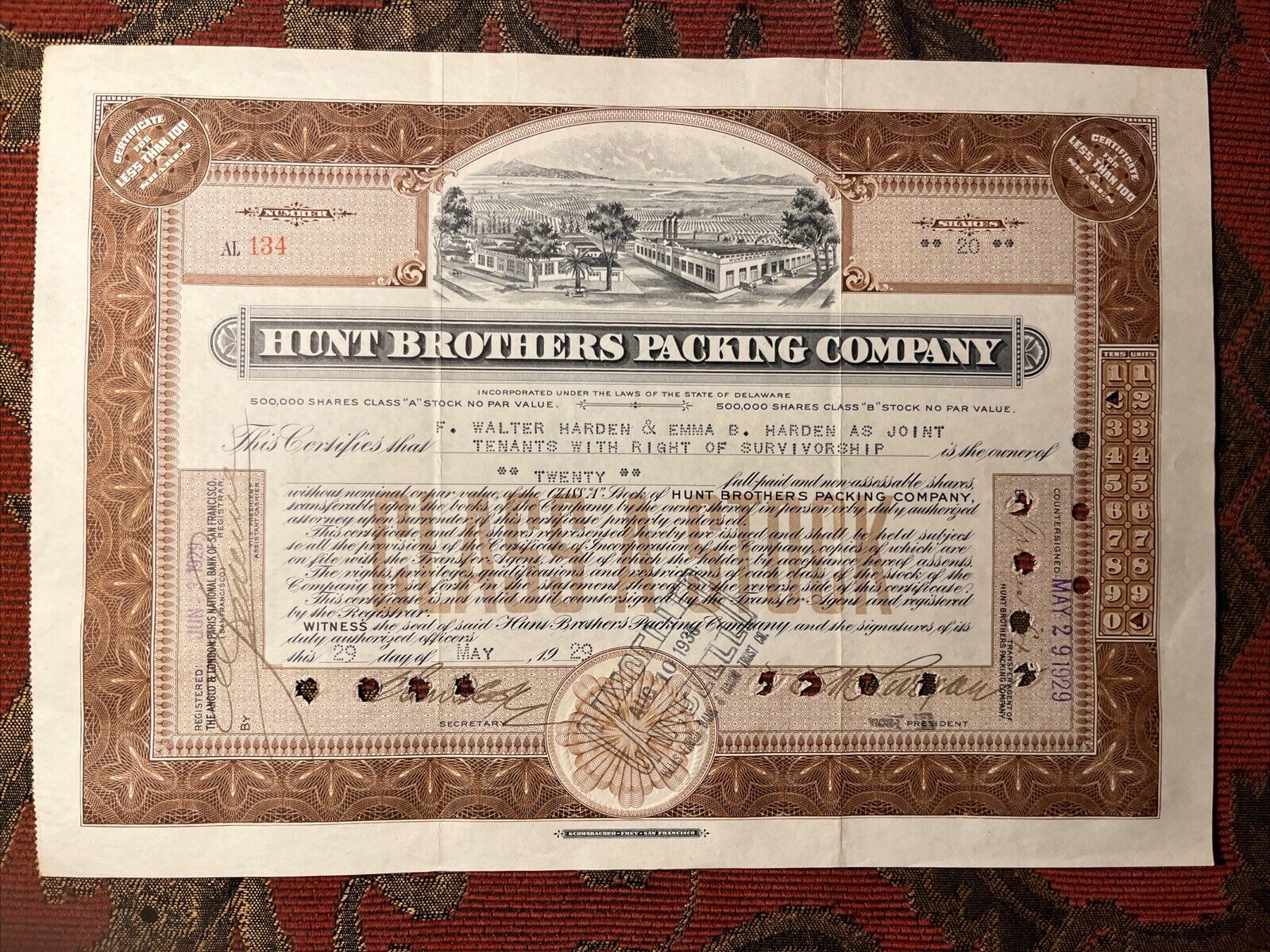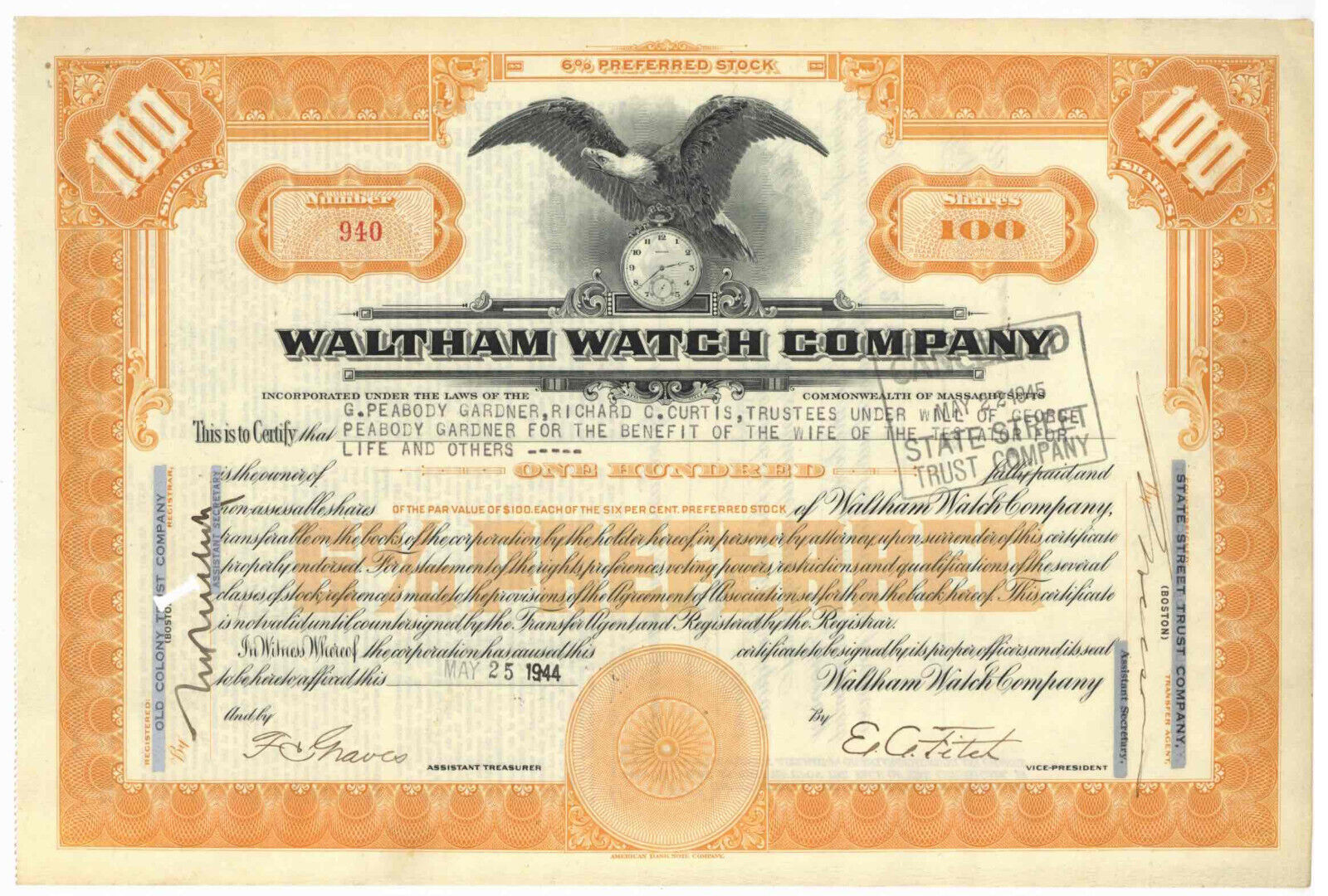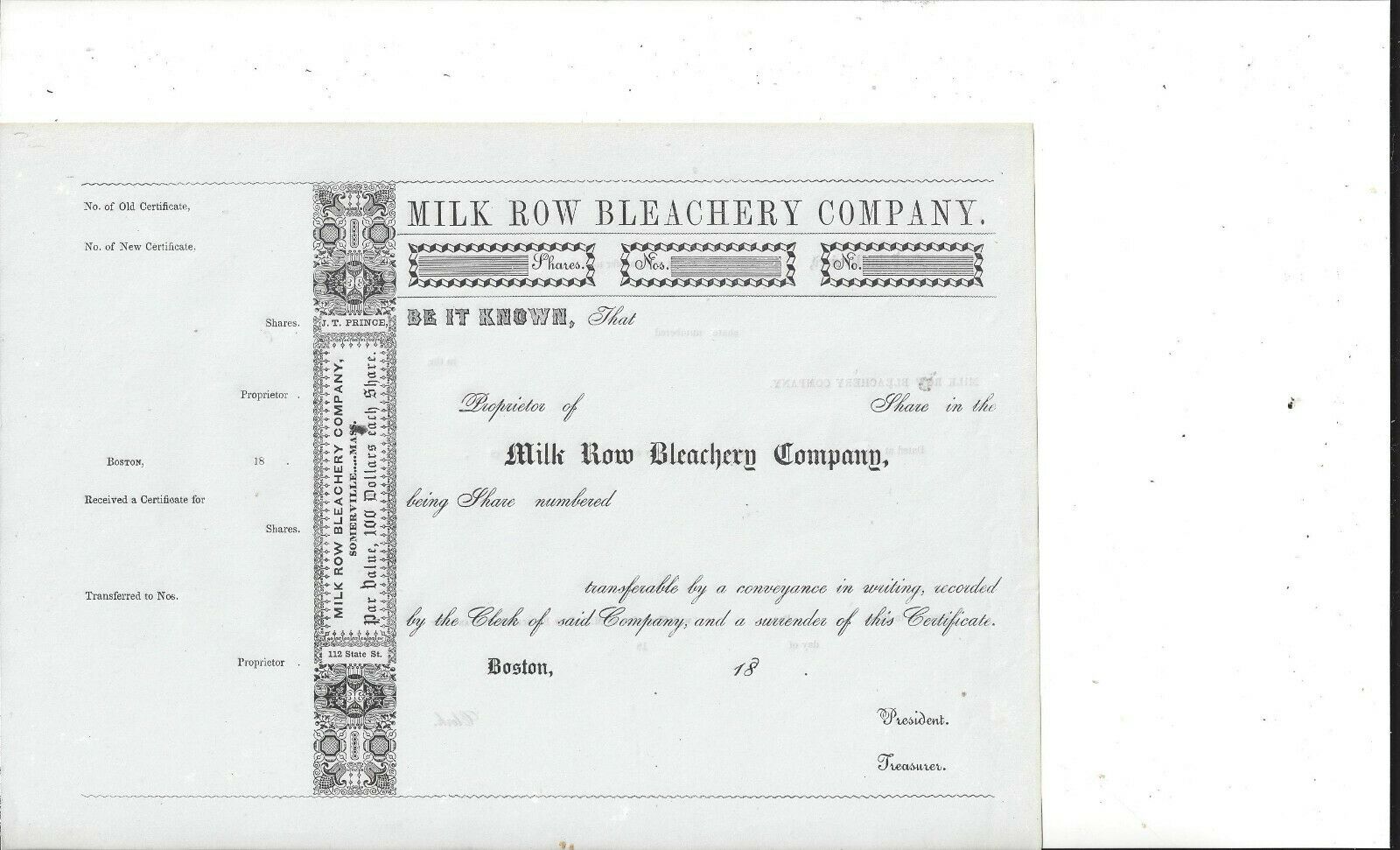-40%
North American Co. stock certificate 1932 Original Dow Jones Indus Average stock
$ 5.27
- Description
- Size Guide
Description
North American Company stock certificateDated 1932
North American was one of the Original Dow Jones Industrial Average stocks
Issued to the Philadelphia Orthopedic Hospital & Infirmary
North American Company
The North American Company was a significant American holding company that played a pivotal role in the development of the electric utility industry and other sectors in the United States. Here's a detailed overview of its history:
Founding and Early Development
1890
: The North American Company was founded by Henry Villard, a prominent financier, and industrialist. Initially, it was involved in various sectors, including transportation and utilities.
Early 1900s
: Under the leadership of influential figures like John P. Morgan, the company expanded its holdings, focusing on electric utilities, gas companies, and street railways.
Growth and Expansion
1910s-1930s
: The North American Company became one of the largest holding companies in the United States, owning controlling interests in numerous electric utility companies across the country. It was instrumental in the development of electric power infrastructure.
Diversification
: The company also diversified into other areas, including gas utilities and public transportation systems, enhancing its influence and economic power.
Regulation and Legal Challenges
1930s
: During the Great Depression, the U.S. government began to scrutinize large holding companies, which were seen as having excessive control over public utilities. The Public Utility Holding Company Act (PUHCA) of 1935 aimed to dismantle such monopolies.
1940s
: The North American Company fought legal battles to resist the forced divestiture of its holdings mandated by PUHCA. However, the U.S. Supreme Court upheld the legislation, and the company was required to reorganize.
Reorganization and Decline
1946
: Following the Supreme Court decision, the North American Company began divesting its utility holdings. This marked the beginning of the company's decline as a major holding entity.
1950s-1960s
: The company continued to operate but on a much-reduced scale. It eventually shifted its focus away from utilities.
Dissolution
1980s
: By this time, the North American Company had divested most of its major assets. It ceased to be a significant player in the industry.
2004
: The company was officially dissolved, marking the end of its corporate existence.
Legacy
The North American Company's legacy lies in its early role in shaping the electric utility industry in the United States. Its vast network of holdings and the infrastructure it developed were crucial in the widespread adoption of electric power.
The legal battles and regulatory actions against the North American Company also set important precedents in U.S. corporate and utility regulation, influencing how public utilities were managed and controlled.
Dow Jones Industrial Average
The original Dow Jones Industrial Average (DJIA) was created by Charles Dow and first published on May 26, 1896. It was designed to be a stock market index that could serve as a barometer of the overall health of the U.S. stock market and the broader economy. Here are some key details about the original DJIA:
Number of Companies
: The original index included 12 industrial companies. These companies were chosen to represent the leading industries of the time.
Industries Represented
: The companies were primarily from the industrial sector, including railroads, cotton, gas, sugar, tobacco, and oil.
Calculation Method
: The index was originally calculated as a simple average. The stock prices of the 12 companies were added together and then divided by 12.
Original Components
:
American Cotton Oil Company
American Sugar Company
American Tobacco Company
Chicago Gas Company
Distilling & Cattle Feeding Company
General Electric
Laclede Gas Company
National Lead Company
North American Company
Tennessee Coal, Iron and Railroad Company
U.S. Leather Company
United States Rubber Company
Purpose
: The DJIA was created to provide a clear and straightforward measure of stock market performance, making it easier for the public and investors to understand the market's movements.
Over time, the DJIA has evolved significantly, expanding to include 30 companies and incorporating various adjustments to account for stock splits, dividends, and other factors. It remains one of the most widely followed stock market indices in the world

